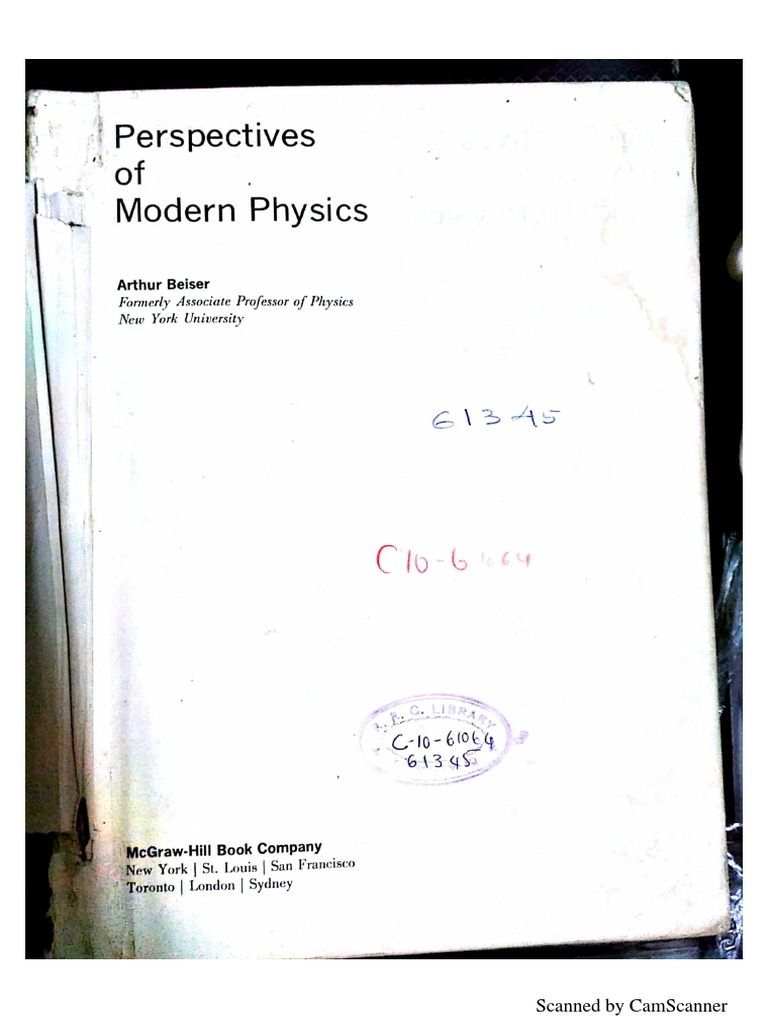Modern physics, a discipline characterized by its profound inquiry into the fundamental forces of nature and the intricate fabric of the cosmos, is adorned with magnificent theories and concepts. However, while the significant achievements of this field are well-documented, one must ponder: where is the hidden part of modern physics? This exploration not only promises to shift our perspective but also piques an indomitable curiosity about the very essence of reality as we perceive it.
The undiscovered realms of modern physics beg investigation. Historically, the major paradigms have been established through venerated theories such as quantum mechanics and general relativity. These foundational layers present a semblance of coherence and excitement. Yet, beneath these luminaries lies a complex tapestry woven with enigmas, anomalies, and unresolved questions. This discussion embarks on an intellectual odyssey, traversing the lesser-known aspects of modern physics that may redefine our comprehension of the universe.
One poignant area lies in quantum entanglement, a phenomenon that Albert Einstein famously termed “spooky action at a distance.” At the crux of this phenomenon is a perplexing correlation between particles that remain interconnected regardless of space and time. Classical interpretations falter when confronted with this conundrum, as non-locality challenges our conventional understanding. The exploration of quantum entanglement delves into philosophical implications, raising queries about causality and the very nature of choice. Could this interconnection hint at a hidden structure of reality, one that transcends our conventional spatial-temporal constraints?
The second arena ripe for exploration is the pursuit of a unified theory of quantum gravity. The tension between general relativity, which elegantly describes gravity, and quantum mechanics, encapsulating subatomic realms, reveals a significant gap in theoretical physics. Researchers grapple with formulating a cohesive framework that integrates these two towering giants. In essence, the hidden part resides in the transitory phase between the macroscopic and microscopic behaviors of the universe. Efforts such as string theory and loop quantum gravity represent attempts to bridge these chasms. However, the successful application of a singular model remains elusive, hinting at further complexities intrinsic to the very fabric of spacetime.
Moreover, the realm of dark matter and dark energy is largely uncharted territory, accounting for an estimated 95% of the universe’s energy density while remaining imperceptible to current direct observations. These elusive components prompt inquiries about the universe’s grand narrative. Polished theories abound regarding their existence, capabilities, and origins, yet they remain frustratingly obscure. The invisibility of these forces suggests that our understanding is only superficially grappling with the cosmos. As physicists delve deeper into advanced models and cosmological studies, the possibility of unveiling the true nature of dark matter and dark energy looms large, envisioning a paradigm shift in our cosmic perspective.
Additionally, one cannot overlook the philosophical ramifications entwined with the multiverse theory. This proposition, suggesting multiple co-existing universes, invites both fascination and skepticism. The idea that our universe is merely one of a grand tapestry of realities challenges the traditional notions of unique existence. Each universe may harbor distinct physical laws and constants. Consequently, the hidden part here lies in the exploration of implications for identity and existence within this pluralistic framework. What does it mean to be “chosen” among infinite probabilities? And how does this shape our understanding of free will and determinism?
Furthermore, the quantum-classical divide underscores an essential dichotomy that unfolds at the quantum level. Observational effects dictate particle behavior, yet classical mechanics dominates the macroscopic world. This transition remains one of the most profound mysteries of physics. By dissecting the underlying mechanisms enveloping wave function collapse, researchers can unravel the secrets lodged in the interface between observer and observed. Could this avenue unlock new dimensions of understanding regarding consciousness, perception, and the notion of reality itself?
The fertile ground of condensed matter physics is another locus of hidden potential, where phenomena such as quantum phases of matter and emergent properties challenge conventional paradigms. Topological insulators and superconductors exemplify how collective behavior underpins novel states of matter that escape simplistic explanations. Investigating these systems may yield breakthroughs in our comprehension of quantum systems, ultimately translating into revolutionary technological advancements such as quantum computing, which fosters further inquiry into the application and manipulation of quantum effects.
In contemplating the hidden layers of modern physics, the search for the elusive theory of everything becomes paramount. While extraordinary strides have been made, the interconnectedness of disparate realms necessitates further intellectual engagement. As each thread of inquiry entwines with others, they weave together a progressively intricate narrative. This journey demands an openness to ambiguity, for the answers sought may lie beyond our current theoretical frameworks.
The pursuit of knowledge within modern physics is tantamount to uncovering layers of existence itself. As curiosity propels exploration, understanding deepens, revealing a hidden landscape that lies just beyond the reach of familiar concepts. This landscape promises to illuminate not only our comprehension of the cosmos but also invites profound reflection on our place within it, fuelling an insatiable quest for truth and enlightenment.












